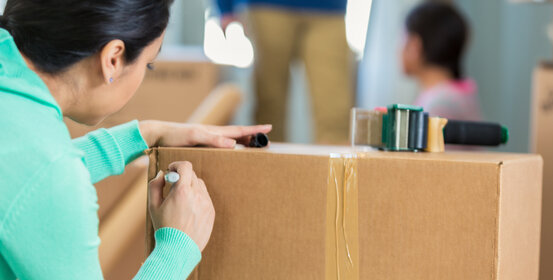
Getting ready for a move can make or break your experience with local movers. A thorough moving plan is the key. Here are some of the best tips and tricks to help ensure your move goes smoothly.
Moving requires a lot more work than just packing up with a local mover, so make a to-do list to help stay organized.
Some items to add to your to-do list timeline are:

Local movers are a fantastic asset when you’re moving.
Do some research on the top local movers. Be sure to hire them a a few weeks ahead of time to help you stay on top of everything else.
When moving day comes, assign one person to work with the local movers to manage the loading and unloading process.
When you’re investigating local movers, ask questions such as:
Set aside a container for giving away and one to sell. If you haven’t used it in six months to a year, it’s time to give it away or make some money by selling it. Use the extra money towards your move, or to save for updating your place.
Make a moving supplies inventory. It should include items like:
Ask friends and family and see if they can donate these to you. Make use of laundry baskets, storage containers and duffle bags you may have around the house, by filling them with assorted belongings. Keep in mind, professional relocation services will require all items be packed in moving boxes or totes with a lid. They can’t move items in plastic bags, open top boxes, etc., because these cannot be stacked inside the truck and/or can tip over.
Decorative items like paintings, tapestries, statues, and other ornaments are not essential in your home other than beautifying your surroundings. If they are not essential to your everyday function in your home, pack them up first. Packing little by little this way takes a huge chunk of stress out of the process.
Labeling boxes, especially if you will need essential items right away like grooming items like toothbrushes and deodorant, clothes, and essential belongings. When you get to your new home, having each box categorized and labeled helps you and your local movers know their proper placement.
Here’s something to keep in mind: don’t pack all your belongings. Well before your move date, start sorting through your things. Moving is the perfect time to donate, recycle, and if needed, toss unwanted items. It’s a simple equation: Less stuff equals less stress.
Make sure you pack appropriately. Be sure the size of the container, and the cushioning material you use, are appropriate for the items you pack.
For heavy objects, compact is better; you don’t want a large box full of heavy items. Fragile items need space in the box for filler material. Cover China pieces individually before they are packed. Take the time to get the right boxes and materials.
If you are unsure about how to pack certain items, take a look at our packing advice page.
You may already know that you should label every box. And you should. But, if you want to make your life easier, don’t just label, create a system for labeling.

Understand that labeling has two purposes. 1) Makes sure the movers know where goes, and 2) gives you a clue as to what’s inside.
First, use colors. It might be as basic as boxes with blue labels go to the living room. The idea is that the mover just needs to see the label to know in which direction to go. Don’t make it overly complicated, but do make it useful.
Write bold. You don’t want to have to search for the label. Make it obvious and put it on multiple sides of the box.
If you use abbreviations, make sure they are obvious as well. Is “BR” bathroom or bedroom? Better to take the time to spell it out now than waste time trying to decipher it later.
Finally, label your new home. For more compact homes, this may not be a big deal. But, if you have a large number of bedrooms, it will be helpful if each room is uniquely labeled, with the correct label on the box.
Getting settled into a new home can be quite the undertaking, especially with children. Prepare a few designated boxes that have the crucial items your kids will want during the initial settling-in period. It may be treasured action figures or dolls, art supplies, or video games. Scouring for these items while trying to get the rest of the house unpacked is a good time. Make it easy on yourself and keep these boxes within reach.
Adults are not that different than kids. There are things we want to have available immediately. Prepare a few boxes that will have your necessities to get through the initial week. Clothes, personal hygiene items, things to read, or even video games. These are the boxes that, if you can get no additional items, will get you through the initial week.
Need more advice? Get in touch with us to schedule your complimentary, pressure-free, virtual move estimate. Our move representatives and local movers have the expertise to guide you through your challenging moving details. Contact us and see why Corrigan has been an industry leader for nearly a century!